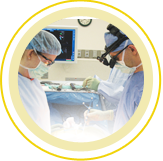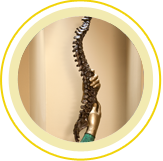Young athletes are frequently affected by the conditions spondylolysis and spondylolisthesis. Although we won’t try saying those conditions five times fast, we will try explaining the difference between them.
What Is Spondylolysis?
Spondylolysis is a crack or fracture in one vertebrae of the spine. It happens frequently in children and adolescents, especially those who play football, lift weights, or perform gymnastics.
Occasionally, this stress fracture will weaken the bone to the point that it can no longer stay in its proper position, and begins to shift or move out of place. The fracture usually occurs in the 5th lumbar of the lower spine, but it can also occur in the 4th either on one side or both sides of the bone.
Spondylolysis can happen to anyone at any age, but the spines of the young are most problematic because of ongoing developmental issues that may occur as they age.

What Is Spondylolithesis?
If spondylolysis is left untreated, it can progress into spondylolisthesis where the injured vertebrae shifts forward onto the vertebrae directly below it. In many cases this will happen to a young person during a rapid growth spurt.
Spondylolysis can be categorized as either low or high grade depending on the amount of movement or slippage by the vertebrae. In order to be determined as high grade spondylolisthesis, 50% of the width of the injured vertebra moves forward.
In this case the symptoms are severe pain and nerve injury requiring surgical intervention.
Specific Differences Between Spondylolysis and Spondylolisthesis
Some differences between these two conditions include the following:
- Patients can have one condition without the other.
- It is more common for a child to have spondylolysis without spondylolisthesis.
- Adults are more frequently diagnosed with spondylolisthesis than spondylolysis.
- Surgery is usually required as an adult.
- Children rarely require surgery unless there is severe slippage.
- Children may have trouble walking, some deformities in their posture, and tightness in the hamstrings, but rarely suffer from pain.
- Adults experience leg pain, numbness, and weakness in their limbs.
The one commonality of both conditions is that any pain or other symptoms usually begin in the middle of the lower back and move downward.
Treatment Options in Greensboro and High Point, NC
Initially all treatments begin conservatively with rest, avoiding all sports for a time, over-the-counter anti-inflammatory medications to reduce swelling and relieve any pain, physical therapy, and sometimes bracing.
Treatment for adults depends on the level of pain, the degree of slippage, and any possible nerve compression that may be present. There is an excellent success rate after surgery, and new, less invasive techniques are helping to improve recovery time.
Contact Dr. Cohen or Dr. Torreabla if you or your child is experiencing any symptoms of spondylolsis or spondylolisthesis.
As always, if you have any further questions or would like to schedule an appointment, please call 336.333.6306 or request an appointment online today!



